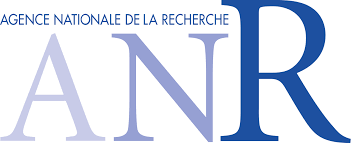Leads: Marit-Solveig Seidenkrantz and Audrey Limoges
WP1 focuses on data acquisition and synthesis of the information. It will build on existing archives and include the analysis of new material that will be used to fill data gaps that currently prevent inter-regional comparison. A variety of types of archives will be explored and combined.
(1) Lacustrine and wetland deposits that contain biological remains from vegetation (pollen, spores, plant macrofossils and charcoal), ambient water (diatoms) and surrounding environments (chironomids, lipid biomarkers) are used to reconstruct the vegetation and climate. Pollen assemblages permit quantitative estimates of climate parameters such as July air temperature, sunshine and annual precipitation. Chironomids and diatoms can provide complementary information to determine the air temperatures and hydrological conditions. Lipid biomarkers and their isotopes can be used to reconstruct summer temperature, precipitation isotopes, and humidity.
(2) Marine sediment cores contain biological remains from the terrestrial vegetation (pollen, spores and biomarkers) and microalgal and macrofaunal remains. Among those, dinocysts are used to quantitatively reconstruct summer and winter sea-surface temperature and salinity in addition to productivity and sea ice. Diatoms allow to estimate temperature and sea ice cover, whereas benthic foraminifers are indicators of ocean conditions and carbon fluxes. Moreover, the calcareous shells of foraminifers are used for radiocarbon dating, and stable isotope measurements (18O and 13C) that provide complementary information on water properties.
(3) Historical and cultural sources from the last centuries allow to address the impacts of past climate change on human populations. Historical and cultural sources have the propensity to show extreme climatic events, unpredictable in time, strength and place. Such records provide unique information on human vulnerability associated with environmental, cultural and climatic changes or events. The selected documentary archives of potential value here include Moravian missionary reports, Hudson Bay Company trading office and ship logs, Icelandic sources (Saga) and other local sources.
(4) Archeological and geoarchaeological investigations will focus on selected intra and extra-sites with the aim to characterize processes of natural and anthropogenic site formation, the impact of human occupation on surrounding ecosystems and site occupation periods. To this end, we will integrate archeological information, and stratigraphical, micromorphological, geochemical and paleoecological data.
(5) All other information, such as ice core data available from the paleoclimate datasets archived at NOAA and other data available from open access databases (Neotoma, Pangaea, LiPD, etc.) will be used to reinforce reconstructed climate parameters and constraint climate model. A comprehensive understanding of the drivers of, and response to, climate and environmental change in coastal margin systems can only be achieved by means of detailed multi-proxy reconstructions.
Main tasks:
Extract information from CERA-20C Coupled Reanalysis of the Twentieth Century in order to document the 1900-2010 CE intra- and inter-annual variations of climate parameters with a spatial resolution of ~ 100 km. The data will be used for making statistics on the pre-1950 CE variability to ongoing climate changes, and as calibration tool for paleoclimatic transfer functions.
Extract data from the existing collection of marine sediment cores collected in the Hudson Strait, Nain and Nuuk areas to reconstruct quantitatively productivity, sea ice, sea-surface conditions and other relevant parameters.
WP 1.3 Complement and compile regional information on climate variability and environmental changes from pollen records, chironomid data, biomarkers and all other terrestrial proxies contained in peat sections and sediment cores, with special care to standardize and quantify climate parameters, such as surface air temperature.
Compile existing paleoclimate records for the study regions from published literature and databases (NOAA WDC, PANGEA), direct communications with researchers, and image digitization if direct access to digital source data is not available.
Integrate data regarding extreme events (e.g. tsunami, landslide, wildfires) that could or have affected subsistence economy and lifestyle of communities, using historical sources and papers.
Compile and organize existing information from research, historical and cultural sources for understanding the idea of North and the cultural perception of the evolution of the region, from multilingual, pluricultural and interdisciplinary viewpoints.
Analyze the faunal and archeological remains of selected archaeological sites to document trends in resource abundance fluctuation, site occupation frequency and the link with climate and sea-ice variations.






